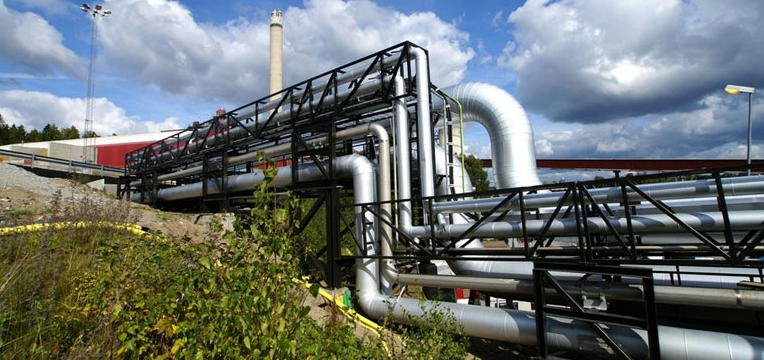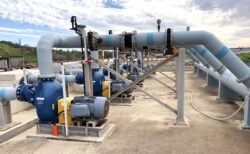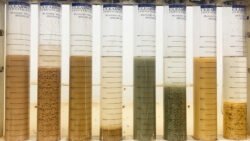Pipeline Networks: Optimizing Fluid Transport Systems for Efficiency

Pipeline networks are the hidden arteries that keep our modern world functioning. These complex systems transport vital resources like water, oil, and gas across vast distances, supplying homes, businesses, and industries with essential utilities. Pipeline networks play a crucial role in ensuring the efficient and safe distribution of resources, impacting our daily lives in ways we often take for granted.
These networks consist of interconnected pipes, valves, pumps, and control systems that work together to move fluids and gases from source to destination. The design and maintenance of pipeline networks require careful planning and ongoing monitoring to ensure reliability and safety. From corrosion control to integrity management, pipeline operators face numerous challenges in keeping these critical systems running smoothly.
Recent developments in pipeline technology have brought about improvements in efficiency and safety. The Biden-Harris Administration’s investment in modernizing natural gas pipelines showcases the ongoing efforts to upgrade aging infrastructure. These advancements aim to reduce leaks, improve monitoring capabilities, and enhance the overall performance of pipeline networks.
Key Takeaways
- Pipeline networks are essential for transporting vital resources across long distances
- Ongoing maintenance and monitoring are crucial for ensuring pipeline safety and reliability
- Technological advancements are improving the efficiency and safety of pipeline systems
Basics of Pipeline Networks
Pipeline networks transport water from sources to homes and businesses. They use gravity and pumps to move water through pipes of different sizes and materials.
How Pipeline Networks Function
Water pipelines use gravity and pumps to move water from sources to users. Large pipes carry water from reservoirs or treatment plants. Smaller pipes branch off to serve neighborhoods and buildings.
Valves control water flow and pressure in the system. Pumping stations boost pressure when needed. Storage tanks hold extra water for high-demand times.
Pipeline networks have sensors to monitor flow, pressure, and water quality. This helps detect leaks and ensures safe drinking water reaches customers.
Types of Pipelines for Water Supply
Main transmission lines are large pipes that move big amounts of water. They connect water sources to treatment plants and storage facilities.
Distribution pipes are smaller and bring water to homes and businesses. These pipes run under streets and connect to service lines for buildings.
Service lines are the smallest pipes. They connect distribution pipes to water meters and building plumbing systems.
Some pipelines use different materials like steel, concrete, or plastic. The choice depends on factors like water pressure, soil type, and cost.
Water Pipeline Components
Water pipeline systems rely on several key components to function efficiently and safely. These parts work together to control flow, maintain pressure, filter contaminants, and prevent damage to the network.
Water Pipeline Valves
Valves play a crucial role in controlling water flow through pipelines. Gate valves allow full on/off control, while butterfly valves offer quick shutoff. Check valves prevent backflow, and pressure reducing valves maintain ideal water pressure.
Ball valves provide precise flow control. Globe valves regulate flow rates effectively. Air valves release trapped air to prevent air locks.
Operators can access underground valves through valve boxes at the surface. Proper valve placement and regular maintenance are essential for smooth pipeline operation.
Water Pipeline Filters
Filters remove contaminants from water as it flows through the pipeline system. Common types include:
- Sand filters: Use layers of sand and gravel to trap particles
- Activated carbon filters: Absorb chemicals and improve taste/odor
- Membrane filters: Remove very fine particles and some microorganisms
Cartridge filters offer easy replacement. Backwashing helps clean reusable filters.
Regular filter changes or cleaning maintains water quality and system efficiency. Monitoring filter pressure drop indicates when servicing is needed.
Anchor Blocks and Thrust Blocks
Anchor blocks for water pipelines secure pipes against movement from internal pressures. They’re often used on steep slopes or at sharp bends.
Thrust blocks resist forces at pipeline direction changes. They’re typically made of concrete poured against undisturbed soil.
Key design factors include:
- Soil bearing capacity
- Pipeline pressure and size
- Angle of pipe bend
Proper sizing and placement of these blocks is crucial to prevent pipe joint separation or pipeline shifts.
Air Relief Valves
Air relief valves in water supply pipelines release trapped air from high points in the system. This prevents:
- Air locks that restrict flow
- Pressure surges from air pockets
- Reduced pump efficiency
Types include:
- Small orifice valves for continuous air release
- Large orifice valves for air discharge during filling
- Combination air valves that perform both functions
Correct valve sizing and placement is essential. Regular maintenance ensures proper operation and system protection.
Pipeline Maintenance and Monitoring
Regular upkeep of pipeline networks is crucial for ensuring safety and efficiency. Key aspects include detecting leaks, cleaning water pipes, and using advanced monitoring technologies.
Leak Detection Techniques
Acoustic leak detection is a popular method for finding water pipeline leaks. It uses sensors to listen for the sound of escaping water. This technique can pinpoint leak locations with high accuracy.
Another approach is pressure monitoring. Sudden drops in pressure often indicate a leak. Sensors placed along the pipeline track these changes.
Visual inspections also play a role. Crews check for signs of water on the ground or unusual vegetation growth. Drones equipped with cameras can survey large areas quickly.
Water Pipeline Cleaning Methods
Pigging is a common cleaning method. A device called a “pig” is pushed through the pipe to remove buildup. There are different types of pigs for various cleaning needs.
Chemical cleaning uses specially formulated solutions. These break down deposits and kill bacteria. The choice of chemicals depends on the pipe material and contaminants present.
Flushing involves pushing high-velocity water through pipes. This method works well for removing loose debris. It’s often used in combination with other cleaning techniques.
Monitoring System Technologies
SCADA systems are the backbone of pipeline monitoring. They collect data from sensors across the network. This allows operators to track flow rates, pressure, and other key metrics.
Smart sensors can detect changes in pipeline conditions. They alert operators to potential issues before they become serious problems. These devices often use wireless technology to transmit data.
Fiber optic cables laid along pipelines can detect leaks and intrusions. They measure tiny changes in temperature and vibration. This technology provides continuous monitoring over long distances.
Challenges and Solutions in Water Pipelining
Water pipelines face several key issues that can impact their performance and longevity. Addressing these challenges requires careful planning and innovative solutions to ensure reliable water delivery.
Addressing Water Hammer and Air Accumulation
Water hammer and air pockets pose significant risks to pipeline integrity. Water hammer occurs when sudden changes in flow create pressure waves. These waves can damage pipes and fittings.
To prevent water hammer, engineers install surge tanks and pressure relief valves. These devices absorb pressure spikes and maintain steady flow. Proper valve operation and pump control also help minimize sudden flow changes.
Air accumulation in pipelines can reduce flow capacity and cause operational issues. Air release valves are installed at high points to vent trapped air. Vacuum breakers prevent negative pressure that can lead to pipe collapse.
Regular flushing of pipelines helps remove air. Operators can also use special pig devices to push air out of the system during maintenance.
Leak Detection and Repair
Leaks waste water and can cause infrastructure damage. Early detection is crucial for minimizing water loss and preventing further issues.
Modern leak detection methods include:
- Acoustic sensors to pinpoint leak locations
- Satellite imagery to spot underground leaks
- Smart meters to track unusual flow patterns
Once detected, leaks require prompt repair. Trenchless technologies allow for minimal surface disruption during repairs. These include:
- Pipe relining
- Pipe bursting
- Horizontal directional drilling
Regular pipeline inspections and pressure testing help identify potential weak spots before leaks occur.
Earthquake Resilience of Water Pipelines
Seismic events can severely damage water infrastructure. Improving earthquake resilience is vital for maintaining water supply during disasters.
Key strategies include:
- Using flexible pipe materials like high-density polyethylene
- Installing flexible joints to allow for ground movement
- Anchoring pipes and valves to prevent displacement
Seismic isolation systems protect critical components like pumps and tanks. These systems absorb earthquake forces and reduce damage.
Redundancy in pipeline networks provides alternate water routes if one section fails. This approach ensures continued service during and after seismic events.
Regular seismic risk assessments help identify vulnerable areas. Utilities can then prioritize upgrades to critical pipeline sections.
Innovations and Advancements in Water Pipelines
Water pipeline technology is evolving rapidly. New systems can generate power and spot problems early. These changes make pipelines more useful and efficient.
Energy Generation Through Pipelines
Water systems can help boost renewable energy use. Some pipes now have small turbines inside. As water flows, these turbines spin and make electricity.
This power can run pumps or go to the grid. It’s a clever way to use water’s natural movement. Pipes that go downhill work best for this.
Some cities already use this tech. Portland, Oregon has turbines in its water pipes. They power thousands of homes each year.
Experts think this idea could spread. It works well with other green energy sources. The power is steady and predictable.
Advancements in Pipeline Monitoring
New tools make finding leaks easier. Smart sensors can spot problems fast. They listen for unusual sounds or measure pressure changes.
Some systems use fiber optic cables. These can detect tiny vibrations from leaks. They work even in large networks.
Drones and robots now inspect pipes too. They can go where humans can’t. This makes checks safer and more thorough.
AI helps make sense of all this data. It can predict where leaks might happen next. This lets crews fix issues before they get big.
These tools save water and money. They also keep pipes working longer. Many cities are starting to use them.
Case Studies and Best Practices
Pipeline networks play a crucial role in water distribution and transportation. Efficient systems and innovative practices can improve performance and reliability.
California Water Pipeline System
The California Water Pipeline System is a vast network that moves water across the state. It includes nearly 3 million miles of pipelines connecting water sources to consumers.
The system uses booster pumps to maintain water pressure over long distances. These pumps help overcome elevation changes and friction losses in the pipes.
Water pipeline cleaning pumps are essential for maintaining water quality. They remove sediment and prevent bacterial growth inside the pipes.
Best Practices for Pipeline Efficiency
Regular maintenance is key to pipeline efficiency. Operators should schedule routine inspections and repairs to prevent leaks and breakdowns.
Using modern materials like polyethylene pipes can reduce leaks and improve safety. These pipes are more flexible and resistant to corrosion than older materials.
Chemical treatment pumps help protect pipelines from corrosion and scale buildup. The right chemical balance extends pipeline life and maintains water quality.
Implementing smart monitoring systems allows for real-time leak detection and flow optimization. This technology can significantly reduce water loss and energy use.
Evaluating Water Pipeline Networks
Water pipeline networks form the backbone of urban water supply systems. They transport clean water from treatment plants to homes and businesses across vast distances.
Pros and Cons of Water Pipelines
Water pipelines offer many benefits. They provide a reliable water supply to large populations. These systems can move water efficiently over long distances.
Pipelines also protect water quality. They keep contaminants out and maintain proper pressure. This helps prevent waterborne diseases.
Pipeline networks use gravity flow where possible. This reduces energy costs for pumping. When pumps are needed, they use about 2% of U.S. electricity.
On the downside, pipelines are expensive to build and maintain. Leaks can waste water and cause damage. Old pipes may contain lead, posing health risks.
Comparative Analysis of US Water Pipeline Systems
The U.S. has over 1 million miles of water pipelines. Many of these are aging and need replacement. Some cities still have lead service lines that pose health risks.
Pipeline materials vary across the country. Newer systems use PVC or ductile iron. Older ones may have cast iron or even wood pipes.
System sizes differ greatly. New York City’s network spans 6,800 miles. Small towns may have just a few miles of pipes.
Water loss is a major issue. Some cities lose over 20% of water to leaks. Others have reduced losses through better monitoring and repairs.
Frequently Asked Questions
Pipeline networks face various challenges and use different technologies. Safety, materials, automation, and environmental factors all play key roles in their design and operation.
How does one optimize the design of water pipeline networks for efficiency and cost-effectiveness?
Designers use computer modeling to find the best routes and pipe sizes. They look at land features, water flow, and pressure needs. Smart valves and pumps help save energy and reduce costs.
What are the common safety considerations and challenges in water pipeline networks transportation systems?
Leak detection is a top concern. Regular inspections and pressure tests help find weak spots. Corrosion prevention techniques extend pipeline life. Emergency shut-off systems protect against spills.
Can you describe the different materials used in the construction of water pipeline networks?
Steel is strong and widely used. Plastic pipes resist corrosion and are easy to install. Concrete pipes work well for large water mains. Each material has pros and cons based on the project needs.
What role does automation play in the monitoring and control of water pipeline networks?
Sensors track flow rates, pressure, and water quality. Control systems adjust valves and pumps automatically. This helps prevent issues and saves energy. Remote monitoring allows quick responses to problems.
In what ways are water pipeline networks impacted by environmental regulations and policies?
Rules affect where pipes can be placed. Water quality standards guide treatment needs. Some areas require wildlife protection measures. Permits are needed for crossing waterways or protected lands.
How do advancements in technology influence the development and expansion of water pipeline networks infrastructures?
New pipe materials last longer and leak less. Better mapping tools improve planning. Trenchless methods allow pipes to be fixed without digging. Smart meters help track water use and find waste.
How does one optimize the design of water pipeline networks for efficiency and cost-effectiveness?
Designers use computer modeling to find the best routes and pipe sizes. They look at land features, water flow, and pressure needs. Smart valves and pumps help save energy and reduce costs.
What are the common safety considerations and challenges in water pipeline networks transportation systems?
Leak detection is a top concern. Regular inspections and pressure tests help find weak spots. Corrosion prevention techniques extend pipeline life. Emergency shut-off systems protect against spills.
Can you describe the different materials used in the construction of water pipeline networks?
Steel is strong and widely used. Plastic pipes resist corrosion and are easy to install. Concrete pipes work well for large water mains. Each material has pros and cons based on the project needs.
What role does automation play in the monitoring and control of water pipeline networks?
Sensors track flow rates, pressure, and water quality. Control systems adjust valves and pumps automatically. This helps prevent issues and saves energy. Remote monitoring allows quick responses to problems.
In what ways are water pipeline networks impacted by environmental regulations and policies?
Rules affect where pipes can be placed. Water quality standards guide treatment needs. Some areas require wildlife protection measures. Permits are needed for crossing waterways or protected lands.
How do advancements in technology influence the development and expansion of water pipeline networks infrastructures?
New pipe materials last longer and leak less. Better mapping tools improve planning. Trenchless methods allow pipes to be fixed without digging. Smart meters help track water use and find waste.


